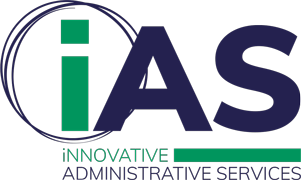Employee Handbooks: Why Your Company Should Have One – And 5 Points to Address for Remote Workers
In this blog entry, we will examine why employers should have an employee handbook – and how it can help in today’s remote work environment. Want to improve the employee onboarding process, decrease misunderstandings on company policies, and possibly help your company avoid legal disputes? Check out the blog below to find out more!
Investing in an employee handbook can bring about great benefits. The following are some reasons why your company should consider creating an employee handbook:
- Provides transparency and guidance to employees on expectations for their roles & responsibilities, employee conduct, and administrative issues (e.g., benefits, vacation, etc.)
- Produces consistency among management; with an official source of record in a written handbook, all employees can reference the same source, avoiding ambiguity from verbal guidance
- Helps new employee onboarding, and can include topics such as company culture, history, and values
- Supports your company on potential legal disputes by providing clear guidance that reinforces regulatory or legal requirements
- Promotes a work environment that reduces biases and favoritisms by establishing the company stance on issues and protocols involving hiring, promotions, and terminations
Expanding on the benefits listed above, having an employee handbook for remote workers is imperative to clarify potentially vague work environments. The following are 5 critical elements your company may want to consider addressing in your employee handbook:
- Set specific work hours an employee must be signed-in on a computer or available to take calls
- Your business may allow for flexible arrangements, but still require employees to be available certain days/times
- Establish physical location requirements (if any)
- For operational, tax, or other reasons, a company may require employees to work within a specific state or country – even if remote
- Define how employees will be evaluated in a remote work setting
- By outlining how management assesses employee performance, workers are less likely to be surprised if they are not meeting job requirements
- Establish technological needs and expectations
- For example, employees may be required to attend video-enabled meetings, meaning work aspects such as dress code, internet speed connection, etc. need to be settled
- Create an inclusive network for employee communication
- Ensure relationship-building still occurs through informal get-togethers, such as virtual coffee meetings
- Develop virtual mentorships or coaching sessions to enhance training and development
Writing an employee handbook from scratch can seem like a daunting task. The following tips may help with getting started:
- Complete the handbook in sections. An employee handbook is not a contractual agreement and can be updated as often as your company wants. Although your handbook should cover a multitude of topics, certain subjects can be completed later.
- Find employee handbooks from other companies to brainstorm best practices. Every company is different, and there is no one-size-fits-all approach.
- Outsource your employee handbook writing. iAS consults with companies all the time to not only physically produce the handbook in printed or digital form, but to also build a framework of procedures & protocols that will strengthen your business’s operations. And, we can provide review services to ensure legal compliance with your existing employee handbook!
Still not sure if your business needs an employee handbook? Ask your workers!
Contact us with questions – we would love to help!




